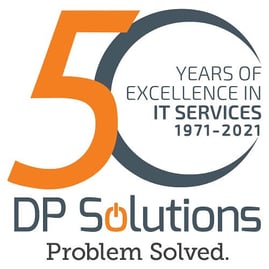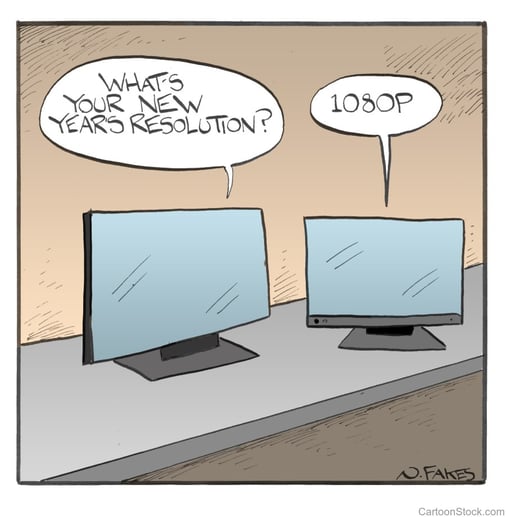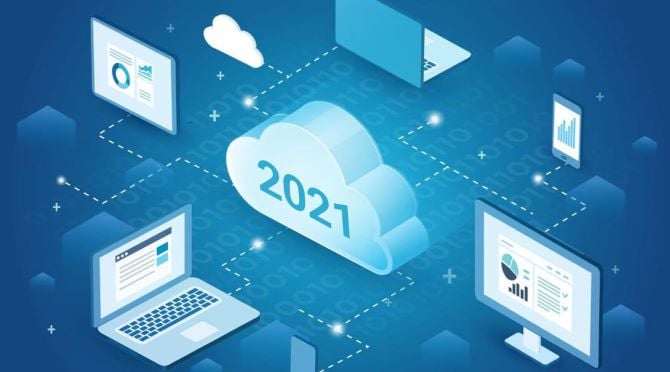
DP Solutions Turns 50

DP Solutions is celebrating
50 Years of Excellence
in Managed IT Services.
We are very proud to achieve this significant milestone and re grateful to our amazing clients and staff who helped get us to where we are today!

Finally Shed The Old This Year – It’s Costing You Much More Than You Think
When was the last time you updated your technology? Between your hardware and software, if you are still doing business on older technology, you could be putting yourself at risk, and it could end up costing you big. As we begin a new year, it’s time to take a close look at the tech you rely on every day.
While many small businesses tend to put off major technology purchases due to the upfront costs, by doing so, you may be opening yourself up to major costs down the road. These are hidden costs that businesses don’t always consider when they decide to “hold off” on investing in new equipment or the latest software.
Here are five ways outdated technology can take a toll on your business:
When you factor in the costs associated with these losses, it can be staggering! It’s enough to put some companies out of business (and it has). After a year that has left many businesses more vulnerable than before, you should be taking steps to avoid these kinds of losses.
Here’s what you can do: as we head into a new year, take stock of your technology. It’s unlikely you have to replace everything, but look at where you are most vulnerable. What issues are your employees experiencing? What hardware or software is no longer supported? Where are the gaps in your IT security?
The great news is that you don’t have to answer these questions on your own. Even better, you don’t have to drop a pretty penny to make it happen! You can work with a managed service provider (MSP) or a dedicated IT services firm that can help bring your business back up to speed. They can even help you mitigate some of the cost that comes with upgrading your technology. In the end, you, your employees, and your customers GAIN complete confidence in your business as you head into 2021!

Stop Recurring Problems
Robert Stevenson
Some of the biggest challenges with companies today are “RECURRING PROBLEMS.” I’m talking about situations, hassles and mistakes that happen over and over again and never get resolved. These occurrences are worse when they happen to customers because if they happen too often, customers will quit doing business with you. Consider what RECURRING PROBLEMS do to employees – frustration sets in, morale plummets and so do productivity and profits.
I heard it once stated that recurring problems eat up more than 40% of the average productivity of a company. That may seem a bit high to you, but consider the fact that rarely is a problem just one person’s problem. The employee who discovers the problem will most likely get others involved in dealing with it. What they were originally doing will come to a halt, causing that productivity to be lost while a remedy is figured out.
To make this an even bigger problem, according to estimates based on a recent University of California Irvine study, refocusing your efforts after just one interruption can take up to 23 minutes. So, every time you come up with a quick fix, you are adding an additional 23 minutes of lost productivity with every occurrence.
Time, which is money, is a precious commodity that we can’t afford to waste. It is imperative to gather data on problems that are RECURRING and hassling employees and customers so you can address them. You want a process to be hassle-free, so get your employees involved in identifying recurring problems. Your employees are closest to the problem and can give you valuable insight into what is really going on. In turn, this will reduce costs, increase profits, and improve efficiency across the board.
The Ritz Carlton Hotels requires employees to log all incidences of customer or employee problems or concerns and turn them in daily. This information helps them make improvements that will save them time and money, improve working conditions and morale and increase customer satisfaction. A problem identified is a blessing because you can’t fix what you don’t know to be wrong. No company wants frustrated employees or customers, and a 40% loss in productivity is a scary statistic that needs to be addressed.
But understand this: do not start this process if you have no intention of following through on correcting the recurring problems. Be responsive to the issue identified and fix it. Eliminate RECURRING PROBLEMS and watch your morale go up, efficiencies improve, complaints go down and profits soar.

Robert Stevenson is one of the most widely recognized professional speakers in the world. Author of the books How To Soar Like An Eagle In A World Full Of Turkeys and 52 Essential Habits For Success, he’s shared the podium with esteemed figures from across the country, including former President George H.W. Bush, former Secretary of State Colin Powell, Tony Robbins, Tom Peters and Stephen Covey.

2020 is over! But as we try to move forward with optimism for 2021, we have to start thinking about what might be changing and how we need to adjust our plans.
In this video, we explore a few emerging trends that could be meaningful to you or your colleagues in 2021 and beyond, and how they may impact your life.
Watch the video here:

“Risk Assessments and Vulnerability Testing”
How they’ve changed as a result of work from home policies
It appears that working from home protocols will be around for the unforeseeable future. Even after the pandemic ends , many businesses as well as employees may find it beneficial to continue to have the flexibility to work from home. Therefore, it is imperative to adapt our security management to this new reality.
When it comes to assessment and testing, we need to be more device focus ed. More flexibility to work generally means that more devices, including personal devices, will be accessing our data from different locations. We need to make sure these devices are properly patched and have all of the tools needed to handle our sensitive data properly. The pandemic accelerated the Bring Your Own Device (BYOD) trend, so we need to have more visibility and management on those devices moving forward.